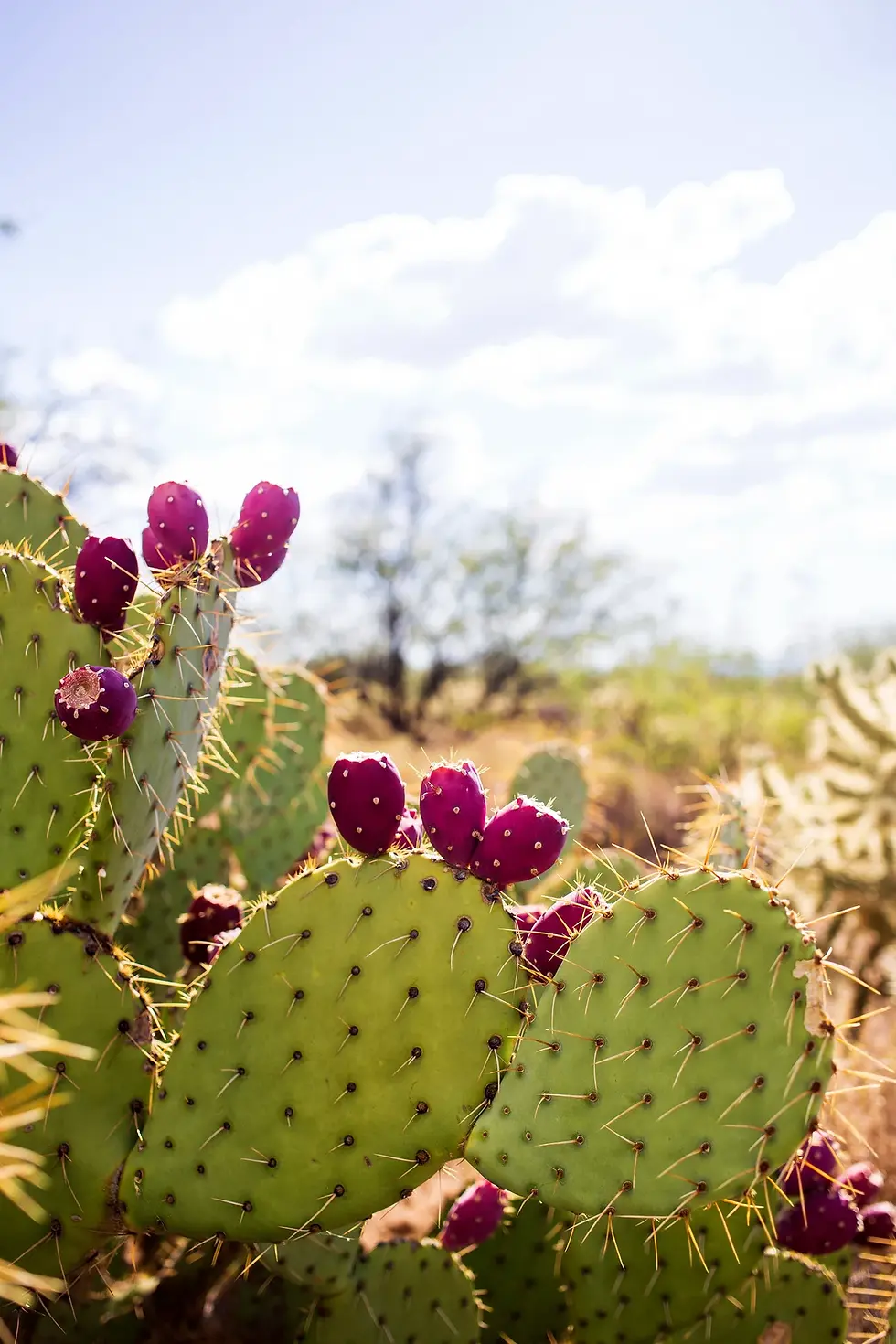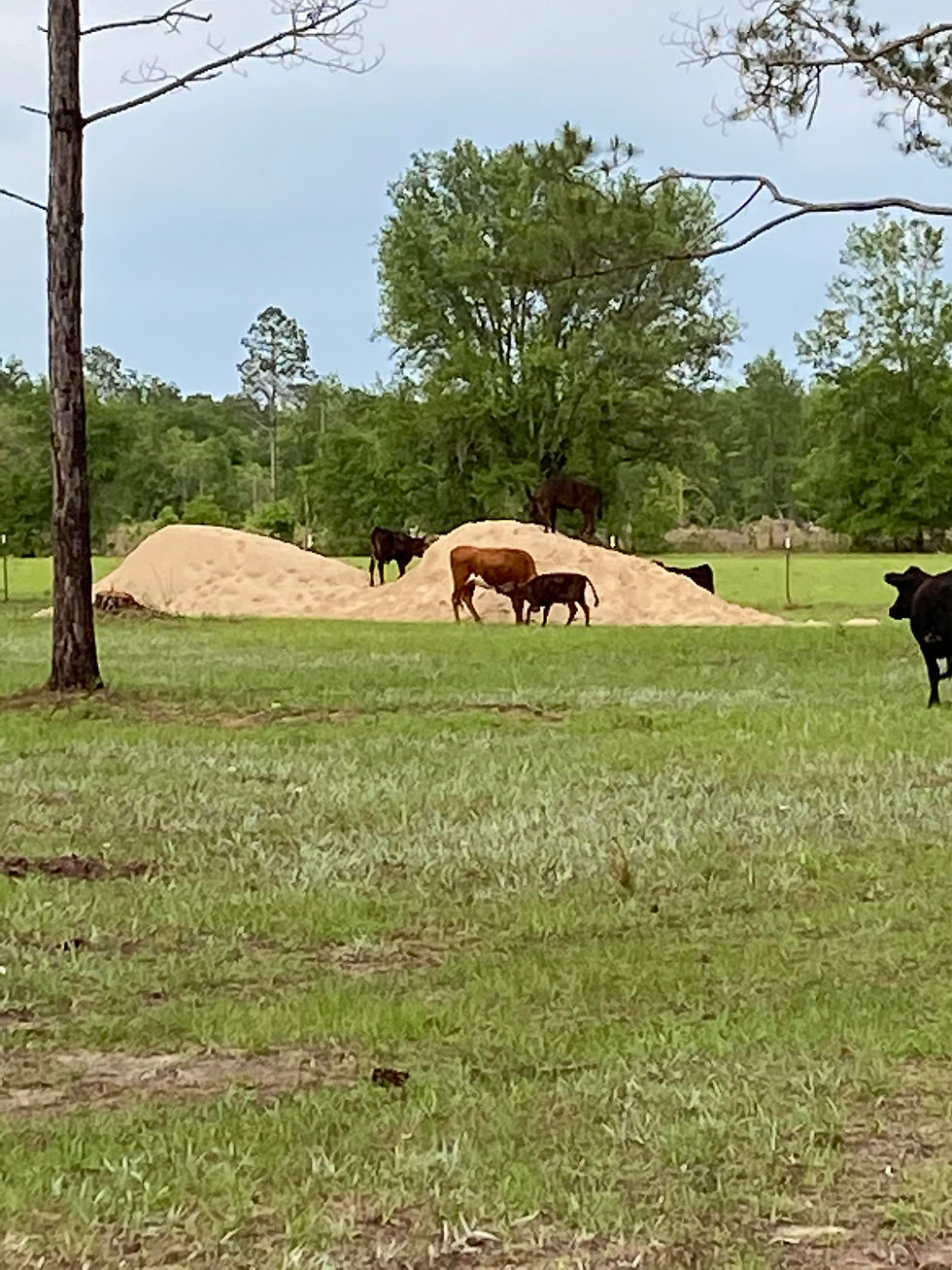The phone rang before the sun was above the horizon this morning. Mike's an early riser, and not much of a phone conversationalist. He probably hoped to get this exercise behind him before leaning into his Wednesday.
This morning's topic was the cows, and specifically whether there was a way we could work with him to keep them on the property, maybe add a few head, and show an income stream for the trouble.
Mike's herd arrived in the early days of the pandemic. Always an overachiever, Elohim blessed Taylor County with a drought to go along with the plague that year, and Mike's pastures were bone dry and overgrazed. Would we mind keeping a few cows and a fairly docile bull at our place? Peg grew up on a cattle farm, so that was a pretty easy sell.
Of course, the pastures were in worse than bad shape, covered over in prickly pear and dog fennel.
Never encountered those before? Well then, a brief tutorial is in order.
Prickly pear cactus grows wild in the Big Bend of Florida, and left unattended will render a pasture useless because its thorns are a deterrent to a grazing animal with a sensitive nose.

Don't be fooled by the cute little buds. These are nasty, nasty plants.
Peg considered trying to harvest and cook them, P being P and always with an eye to the culinary, but we soon gave up after realizing the sheer magnitude of the proliferation and sticking ourselves in the hands a couple times, through gloves, trying to harvest them.
Mike had a better idea; he covered the fields in dolomite, a naturally occurring mineral in these parts that apparently kills and deters the growth of these little varmints. So one day a semi and trailer arrived out behind the house, and $600 worth of the stuff, a small mountain, sat waiting for Mike to get around to spreading it.
In the meantime, the cows and their calves had arrived, along with the indolent bull. The youngsters scampered up and down the pile, playing king of the mountain and pooping in our investment.

Fortunately, Mike was able to salvage enough dolomite to spread over the southwest pasture, and soon we had a new patch of useable grassland to support the fifteen or so cattle who now called Wyldswood home.
Just to the west of that pasture sat an old watermelon field, now covered in our other foil, dog fennel.

Another unwelcome native on the farm, this weed grows chest high, and left untreated or un-stomped by cattle will soon cover a field and choke out the bahia grass the cattle need to survive. And nothing much wants to munch on dog fennel--the leaves are actually toxic to some livestock.
Last spring Dean and Mike plowed and scraped and cleared the dog fennel out of the old watermelon field, giving the grass a chance. They left behind a couple small copses of live oaks for shade, and soon this was the cattle's favorite afternoon hangout on hot summer days.
But lately the dog fennel has returned, and this morning Mike and I strategized about how to deal with the stuff. If we don't do something, and soon, there's the chance it'll start intruding on those pastures Mike's worked so hard to bring back to life over the last couple years. Peg got in her Kubota and tried to bush hog the field last week, but after several jarring drops into gopher tortoise holes decided this project was best left to Mike.
Taking my usual tack as a lawyer, and opining on things I know nothing about, this morning I told Mike I'd found an herbicide online that should kill the dog fennel in the spring and create a window to plant some rye. Mike was having none of it, however. "You can spray that 'ole stuff and it's just gonna come back in a little bit," he observed from decades of experience. "Don't need no spray. We need to get Sam over here to plow with his big equipment, and I'll plant some rye behind him. It'll work just fine."
The herbicide would cost maybe $700.00, if Mike were willing to spray it. Sam, our friendly neighbor who runs a heavy equipment business, will likely charge around $10,000.00 to achieve the same result. Seems a lot of cash to be able to add maybe five or ten cows to the herd, which will also run a few thousand dollars.
Why are we doing all this again?
Oh yeah, Peg loves cattle, and when folks start visiting Wyldswood they'll be charmed by the no-kidding livestock roaming the property, right over the fence from the wedding barn and guest spaces.

And they are sort of charming, come to think of it. Look at that calf, wobbly and bewildered in its first few minutes on this earth. In a place that'll be marked by lots of new beginnings, the cattle and their cycle of life and well, entering the food chain somewhere below the top, all have their role to play.
Comments